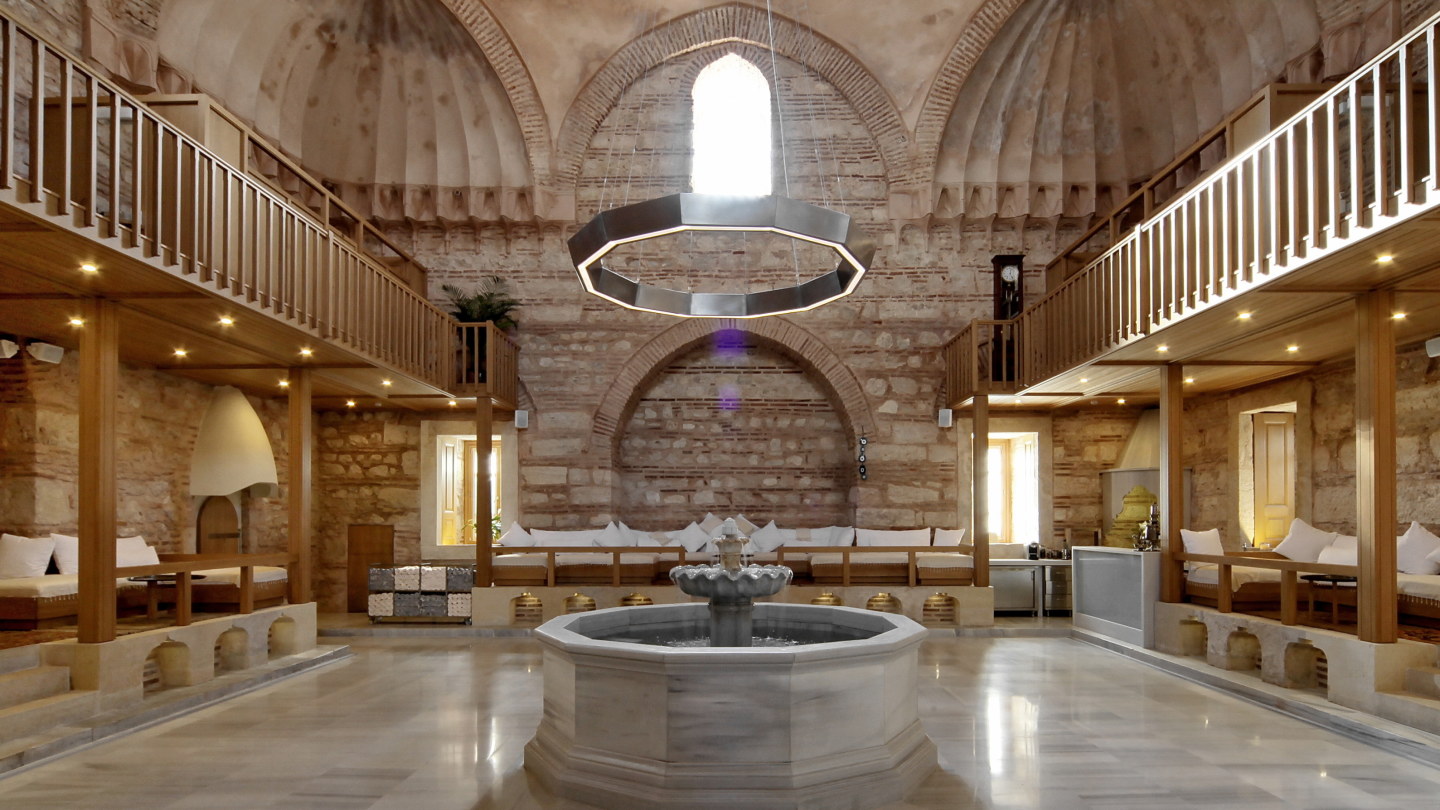Why this is the best hamam in Istanbul
Forget the old stereotype of being whipped with towels. This lovingly restored hamam revives the gentle ancient art of communal bathing.
Ergin Iren describes his decision to restore a derelict hamam beside the Istanbul Modern museum of Art as almost accidental.
Iren had been working as a senior executive with fast-moving consumer goods company Procter & Gamble when he became intrigued by Japan’s ongoing connection to its onsen culture, and the idea of bringing Turkey’s own bathhouse rituals back to his native Istanbul.

The restoration of Kilic Ali Pasa Hamam in Istanbul revived not just the building but the essence of its rituals. Cengiz Karlıova
Happenstance would have it that a dilapidated old hamam appeared for sale and Iren felt the pull, leaving his job to dedicate almost a decade to the painstaking restoration project, which was completed in 2012.
“The hamam is a very authentic experience, however we as Turks don’t really know it well,” Iren says. “It’s been forgotten – no one goes to a hamam bath any more because you don’t really need it.”
Facing the Galataport seafront, Kılıç Ali Paşa was built in 1580 by the architect Mimar Sinan for male seafarers.
The hamam was a necessity before modern plumbing; it was the place where people washed, usually before entering the mosque to pray.

The exterior of the Kilic Ali Pasa Hamam. Ayesha de Kretser
It was also the only place in Turkish society where women could come together to socialise, share stories and connect during their fortnightly or weekly communal bathing ritual.
The restoration of the hamam was inspired by Iren’s desire not only to revive the physical experience of scrubbing, washing, steaming and massage, but also to rediscover the somatic energy of a lost art.
Iren says this involved painstaking studies into Turkish history to learn more about the building and its essence, trying to discover the smells, the sounds and the movement of the hamam ritual, to transport the visitor to a place in Turkiye’s rich history.
Today Kılıç Ali Paşa serves as a model for others trying to do something similar, but Iren has no plans to set up a franchise or expand. He is instead committed to continuously reviving the art and learning as he goes in an attempt to dismiss the cartoonish hamam stereotypes of being whipped or slapped with towels.
The “real deal” is much less melodrama and more deeply spiritual.
Upon entering this fastidiously clean, warm and light-filled hamam you are asked to change into either your own bikini bottom or disposable underwear and given a pair of sandals in your shoe size.
An attendant – male for males or a woman for women – then gently leads you to a communal room where she washes your body with warm water before you are taken under the central dome to steam.

The hot stone under the central dome where you are taken to steam. Cengiz Karlıova
After 20 minutes lying on the hot stone, alongside any other visitors, you are taken to the side and scrubbed by an individual attendant – vigorously – with an abundance of foamy, lemon-scented traditional Turkish soap.
It’s difficult to describe the experience, which is at once incredibly simple – warm water is poured from a bucket, your body is massaged and scrubbed all over, your hair is washed squeaky clean – and complex: the memory of being bathed by a parent can be overwhelming.
The care and attention clearly injected into the soul of Kılıç Ali Paşa through its restoration is personified by all who work here, including each attendant. Any embarrassment at being stripped near-naked and forced to watch layers of dead skin washed away is quickly lost.
There is nothing fancy about this spa, but it is undoubtedly the most memorable and wonderful experience you will enjoy in Istanbul.
Kılıç Ali Paşa Hamam
- Address | Kemankeş Karamustafa Paşa, Hamam Sk. No:1, 34425 Beyoğlu/İstanbul, Türkiye
- Price | About $120
- To book | kilicalipasahamami.com
Subscribe to gift this article
Gift 5 articles to anyone you choose each month when you subscribe.
Subscribe nowAlready a subscriber?
Introducing your Newsfeed
Follow the topics, people and companies that matter to you.
Find out moreRead More

Latest In Travel
Fetching latest articles